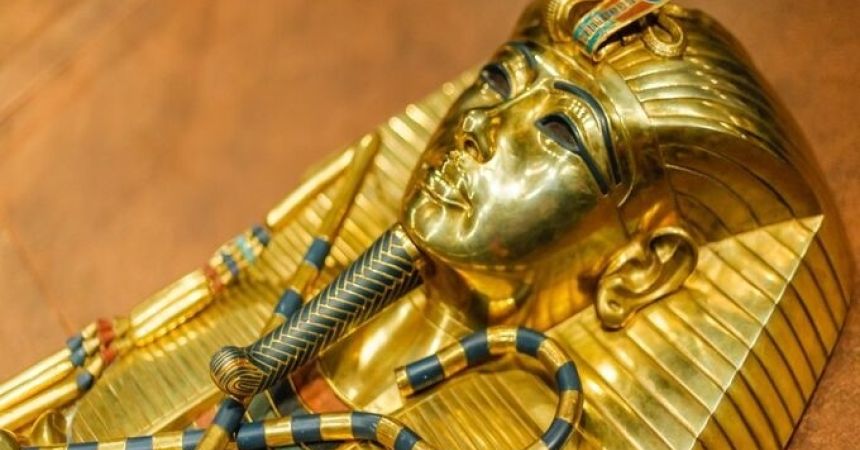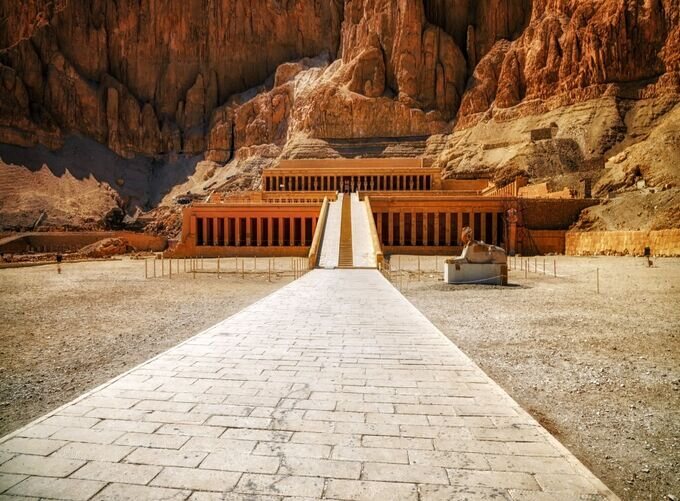
A Guide to Egyptian Art and Museums
Egypt, with its rich and ancient history, is home to some of the world’s most iconic and awe-inspiring art and archaeological treasures. From the monumental pyramids and tombs of the pharaohs to the vibrant frescoes and intricate hieroglyphs that adorn its temples and tombs, Egyptian art reflects a civilization that lasted for thousands of years and influenced cultures around the world. The country’s art is not only found in the artifacts and statues it left behind but also in its museums, where centuries of history come to life.
Whether you are a history buff, an art enthusiast, or simply curious about Egypt’s fascinating Package past, the country’s museums and art collections offer a window into the culture, religion, and daily life of ancient Egypt. In this guide, we will take you on a journey through Egypt’s most famous museums and explore the incredible art and artifacts that tell the story of one of the world’s greatest civilizations.
The Egyptian Museum in Cairo: The Heart of Egypt’s Ancient Art
Located in Tahrir Square in Cairo, the Egyptian Museum is undoubtedly the most famous and comprehensive museum dedicated to ancient Egyptian history and art. It houses over 120,000 items from ancient Egypt, ranging from statues, reliefs, and pottery to mummies and other artifacts. The museum’s collection spans thousands of years of Egyptian history, from the early dynastic period through the Greco-Roman era, and its extensive holdings make it a must-see for anyone interested in Egyptian art.
Key Highlights of the Egyptian Museum:
The King Tutankhamun Collection: One of the most famous collections in the world, the treasures of King Tutankhamun are housed in the Egyptian Museum. His tomb, discovered in 1922 by Howard Carter, contained an incredible array of gold and precious objects, including the famous golden mask of the pharaoh, jewelry, chariots, weapons, and furniture. The King Tutankhamun exhibit is a highlight of the museum and offers an unparalleled look at the wealth and grandeur of ancient Egypt’s royal court.
The Royal Mummy Room: This room is home to 11 royal mummies, including the remains of Ramses II, one of Egypt’s most famous pharaohs. These mummies provide an extraordinary glimpse into the funerary practices of ancient Egypt and the preservation techniques used to keep the deceased intact for the afterlife.
Statues and Stelae: The museum’s galleries are filled with colossal statues of pharaohs, gods, and goddesses. Among the most famous pieces is the statue of the seated Ramses II, which captures the power and majesty of Egypt’s greatest king. Stelae, or stone slabs with inscriptions, also fill the museum’s halls, offering insights into the language, religion, and politics of ancient Egypt.
The Palette of Narmer: One of the most important early artifacts from ancient Egypt, the Palette of Narmer is a ceremonial stone tablet depicting the unification of Upper and Lower Egypt. This significant piece of art provides a glimpse into the symbolism and artistic conventions of early dynastic Egypt.
Tips for Visiting the Egyptian Museum:
Plan to spend a few hours: The museum is vast, and it’s easy to lose track of time while exploring the exhibits. Plan to spend at least 2-3 hours, if not more, to fully appreciate the museum’s offerings.
Hire a guide: While the museum is well-labeled in English, a knowledgeable guide can help you understand the context behind the artifacts, giving you a deeper appreciation of the ancient objects.
Check out the new museum: The Grand Egyptian Museum (GEM), which is set to open near the Giza Pyramids, will house many of the museum’s current exhibits, including the King Tut collection, and is expected to become the largest archaeological museum in the world.
The Grand Egyptian Museum (GEM): A New Era of Egyptian Art
Located just outside Cairo, near the Great Pyramids of Giza, the Grand Egyptian Museum (GEM) is set to be the world’s largest museum dedicated to ancient Egyptian civilization. Scheduled to open in phases starting in 2024, GEM will house an extensive collection of artifacts, including many of the iconic pieces currently at the Egyptian Museum.
What to Expect at the Grand Egyptian Museum:
King Tutankhamun’s Treasures: The GEM will become the new home for King Tutankhamun’s priceless treasures. The museum will showcase over 5,000 artifacts from Tut’s tomb, many of which have never been displayed to the public before.
Exhibition Halls: GEM will have vast exhibition halls dedicated to different periods of ancient Egyptian history, from the early dynastic period to the Greco-Roman era. Expect to see monumental statues, sarcophagi, and everyday objects that provide a deep dive into the art and culture of ancient Egypt.
The Mummy Hall: Like the Egyptian Museum, the GEM will have a special section for mummies, including royal mummies, which will be displayed in a state-of-the-art setting. This will allow visitors to learn more about the funerary practices and rituals of the ancient Egyptians.
Interactive Exhibits and Technology: The GEM will feature cutting-edge technology, including interactive exhibits and augmented reality experiences, to bring Egypt’s ancient civilization to life in a modern and engaging way.
The Museum of Islamic Art (Cairo): A Different Side of Egypt’s Artistic Legacy
While Egypt is most famous for its ancient art, its Islamic period also produced some of the world’s finest examples of Islamic art and architecture. Visit The Museum of Islamic Art in Cairo is home to one of the most significant collections of Islamic art in the world, showcasing objects from the 7th to the 19th centuries.
Key Highlights of the Museum of Islamic Art:
Calligraphy and Manuscripts: The museum’s collection includes rare manuscripts of the Quran and other religious texts, beautifully written in Arabic script. Islamic calligraphy is considered one of the highest forms of art in the Islamic world, and this museum is home to some of the finest examples of this intricate art.
Ceramics and Glassware: The museum houses a collection of Islamic ceramics and glassware, showcasing the delicate craftsmanship of artisans from the Islamic Golden Age. Many of these pieces feature intricate geometric patterns and arabesque designs that are characteristic of Islamic art.
Woodwork and Metalwork: The Museum of Islamic Art has an impressive collection of wood and metal objects, including doors, panels, and chandeliers, many of which come from Egypt’s mosques and palaces. These items reflect the fine craftsmanship and aesthetic beauty of the Islamic period.
Historical Artifacts: The museum also features historical artifacts, such as weapons, coins, and textiles, which provide insight into the material culture of the Islamic world.

The Coptic Museum (Cairo): The Art of Early Christianity in Egypt
The Coptic Museum, located in the Coptic Christian quarter of Cairo, is dedicated to preserving the rich cultural and religious heritage of Egypt’s Coptic Christian community. The museum houses a fascinating collection of Coptic art, which reflects the fusion of ancient Egyptian, Greek, and Christian artistic traditions.
Key Highlights of the Coptic Museum:
Coptic Icons: One of the most notable features of the Coptic Museum is its collection of early Christian icons. These icons, often painted on wood, depict religious scenes such as the Virgin Mary, Christ, and saints. The Coptic style is known for its simplicity and vivid use of color.
Coptic Textiles: The museum also displays an impressive collection of textiles, including woven fabrics, tapestries, and clothing. Many of these textiles are adorned with Christian symbols and motifs, such as crosses and angels.
Mummies and Funerary Art: Like the Egyptian Museum, the Coptic Museum also features mummies and funerary art, but these artifacts are specific to the Christian period. The museum offers insight into how early Christians in Egypt practiced burial rituals and the symbolism behind their tomb art.
Religious Artifacts: The museum’s collection includes a wide range of religious artifacts, such as chalices, crosses, and incense burners, which offer insight into the daily religious practices of Egypt’s Coptic community.
Luxor Museum: The Art of the New Kingdom
Located on the banks of the Nile in Luxor, the Luxor Museum is one of Egypt’s most important museums for ancient Egyptian art. The museum is smaller than the Egyptian Museum but offers a more intimate and focused look at the art of the New Kingdom (c. 1550–1070 BCE), the period of Egypt’s most famous pharaohs, including Ramses II and Tutankhamun.
Key Highlights of the Luxor Museum:
Statues of Pharaohs: The Luxor Museum features a stunning collection of statues, including a beautiful limestone statue of Tutankhamun, as well as statues of Ramses II and Amenhotep III. These statues provide a glimpse into the royal art and symbolism of the New Kingdom.
Mummy of Thutmose III: One of the museum’s most important exhibits is the mummy of Thutmose III, one of Egypt’s greatest pharaohs. His body was discovered in the Valley of the Kings and is now housed in the Luxor Museum, providing insight into Egypt’s royal mummification practices.
Reliefs and Stelae: The museum also displays a variety of reliefs and stelae that depict the military and religious achievements of New Kingdom pharaohs. These carvings often feature scenes of battles, temple rituals, and offerings to the gods.
The Nubian Museum (Aswan): Celebrating Nubian Art and Culture
The Nubian Museum in Aswan is dedicated to the history, art, and culture of the Nubian people, an ancient civilization that lived along the Nile River in southern Egypt and Sudan. The museum showcases Nubian artifacts, including pottery, jewelry, and sculptures, and offers a deeper understanding of the rich cultural heritage of Nubia.
Key Highlights of the Nubian Museum:
Nubian Artifacts: The museum’s collection includes beautiful examples of Nubian pottery, jewelry, and weapons, many of which date back to ancient times. The artifacts reflect the distinct artistic style of the Nubian people.
Mummies and Funerary Items: The museum also features mummies from the Nubian culture, along with funerary objects, such as coffins and sarcophagi, that provide insight into Nubian burial practices.
Cultural Exhibits: In addition to ancient artifacts, the Nubian Museum also highlights the contemporary culture of the Nubian people. This includes music, textiles, and crafts that are still an important part of Nubian life today.
Explore the Best of Egypt Now
Egypt’s museums are a gateway to understanding the art, culture, and history of one of the world’s oldest civilizations. Whether you’re exploring the monumental collections of the Egyptian Museum, the Islamic art treasures at the Museum of Islamic Art, or the Nubian artifacts in Aswan, each museum offers a unique perspective on Egypt’s fascinating past. As you visit these museums, you’ll gain a deeper appreciation for the richness and diversity of Egyptian art, and how it continues to shape the world today.



